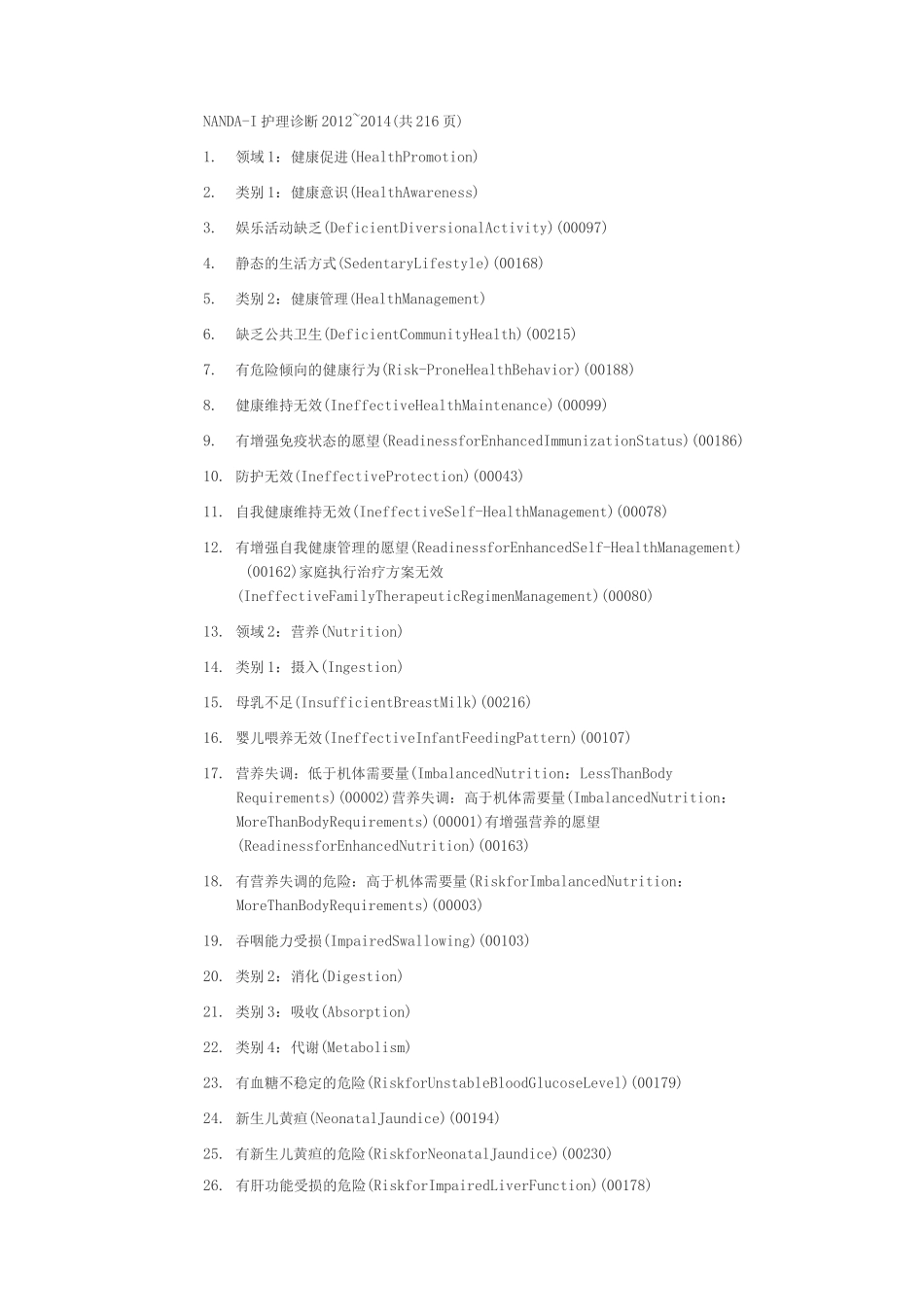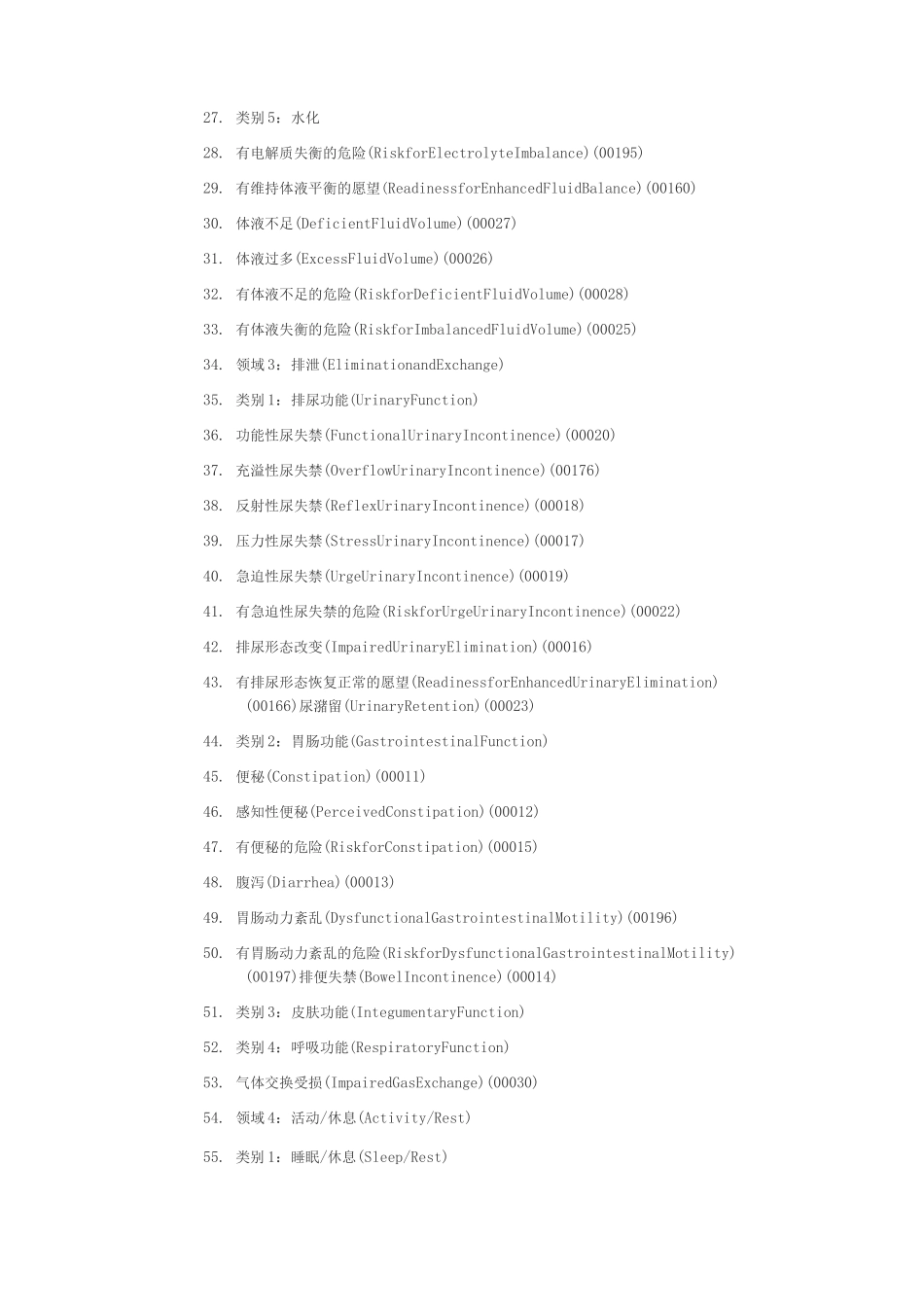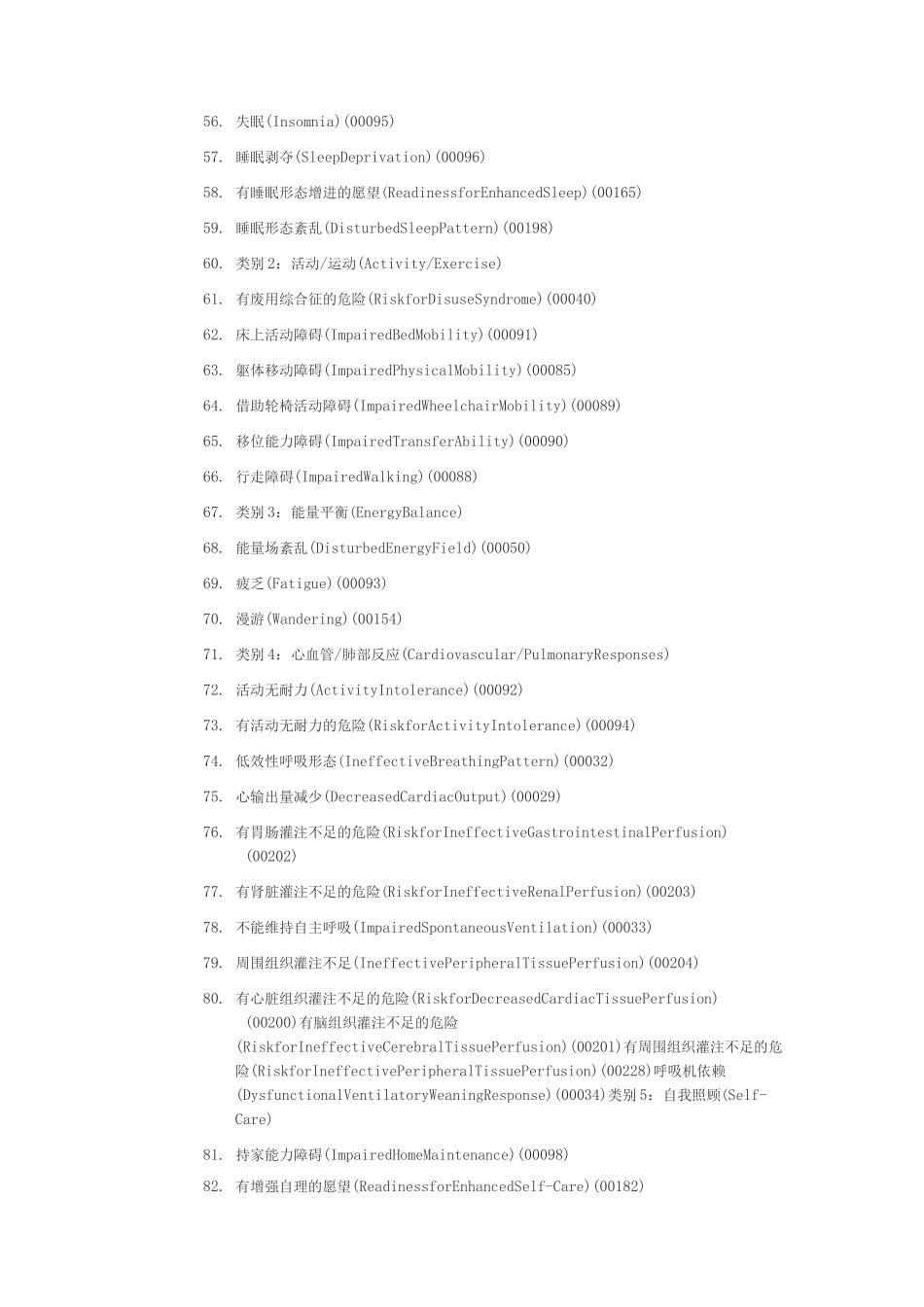NANDA-I 护理诊断 2012~2014(共 216 页)1.领域 1:健康促进(HealthPromotion)2.类别 1:健康意识(HealthAwareness)3.娱乐活动缺乏(DeficientDiversionalActivity)(00097)4.静态的生活方式(SedentaryLifestyle)(00168)5.类别 2:健康管理(HealthManagement)6.缺乏公共卫生(DeficientCommunityHealth)(00215)7.有危险倾向的健康行为(Risk-ProneHealthBehavior)(00188)8.健康维持无效(IneffectiveHealthMaintenance)(00099)9.有增强免疫状态的愿望(ReadinessforEnhancedImmunizationStatus)(00186)10. 防护无效(IneffectiveProtection)(00043)11. 自我健康维持无效(IneffectiveSelf-HealthManagement)(00078)12. 有增强自我健康管理的愿望(ReadinessforEnhancedSelf-HealthManagement)(00162)家庭执行治疗方案无效(IneffectiveFamilyTherapeuticRegimenManagement)(00080)13. 领域 2:营养(Nutrition)14. 类别 1:摄入(Ingestion)15. 母乳不足(InsufficientBreastMilk)(00216)16. 婴儿喂养无效(IneffectiveInfantFeedingPattern)(00107)17. 营养失调:低于机体需要量(ImbalancedNutrition:LessThanBodyRequirements)(00002)营养失调:高于机体需要量(ImbalancedNutrition:MoreThanBodyRequirements)(00001)有增强营养的愿望(ReadinessforEnhancedNutrition)(00163)18. 有营养失调的危险:高于机体需要量(RiskforImbalancedNutrition:MoreThanBodyRequirements)(00003)19. 吞咽能力受损(ImpairedSwallowing)(00103)20. 类别 2:消化(Digestion)21. 类别 3:吸收(Absorption)22. 类别 4:代谢(Metabolism)23. 有血糖不稳定的危险(RiskforUnstableBloodGlucoseLevel)(00179)24. 新生儿黄疸(NeonatalJaundice)(00194)25. 有新生儿黄疸的危险(RiskforNeonatalJaundice)(00230)26. 有肝功能受损的危险(RiskforImpairedLiverFunction)(00178)27. 类别 5:水化28. 有电解质失衡的危险(RiskforElectrolyteImbalance)(00195)29. 有维持体液平衡的愿望(ReadinessforEnhancedFluidBalance)(00160)30. 体液不足(DeficientFluidVolume)(00027)31. 体液过多(ExcessFluidVolume)(00026)32. 有体液不足的危险(RiskforDeficientFluidVolume)(00028)33. 有体液失衡的危险(RiskforImbalancedFluidVolume)(00025)34. 领域 3:排泄(EliminationandExchange)35. 类别 1:排尿功能(UrinaryFunction)36. 功能性尿失禁(FunctionalU...


